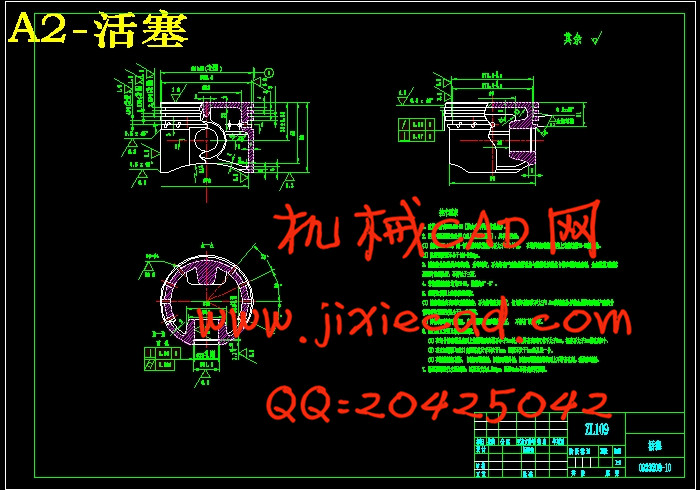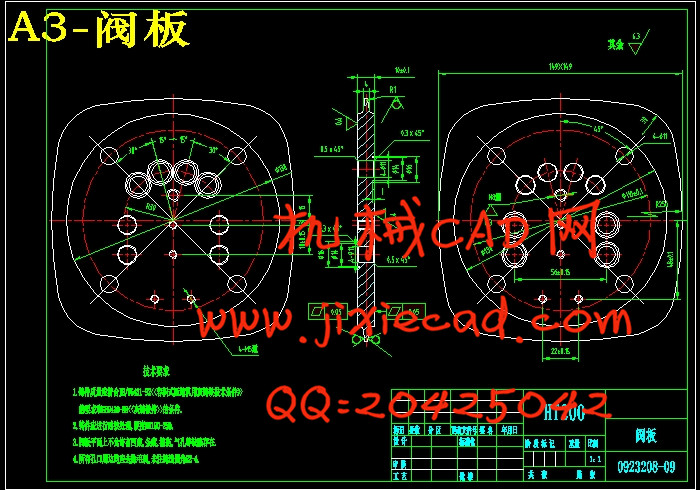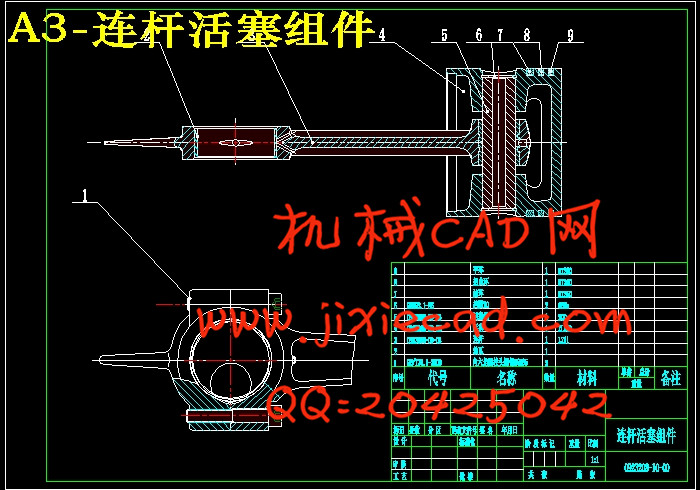设计简介
摘 要
活塞式压缩机是一种容积式压缩。它是用来提高气体压力和输送气体。目前活塞式压缩机广泛应用于工业生产中,如石油裂解气的分离、石油加氢精制、气流纺纱、谷物的气力输送、制冷等领域。本次设计的压缩机主要用于轻纺工业、冶金工业中。通过了解该压缩机的基本结构极其工作原理,重点掌握其结构设计,学会所含零部件的结构设计方法及其强度校核方法。在设计过程中,理论联系实际,我最终了解设计一个机械设备的基本思路和方法。
整个设计过程主要包括三个部分。第一部分是热力计算,包括气缸行程容、最大活塞力、排气温度、功率和效率以及压缩机其他主要结构尺寸的确定;第二部分是动力计算与分析,包括曲柄连杆机构的受力情况的分析计算、主要零部件的强度校核以及力矩平衡;第三部分主要是曲轴的平衡计算。整个设计过程与设计内容是按设计标准要求进行的,符合工程需求。
关键词:活塞式压缩机;结构尺寸;行程容积;主要零部件强度校核;
Abstract
Piston type compressor is a new type of compression. It is used to increase the gas pressure and gas transportation. At present, the piston compressor is widely used in industrial production, such as oil gas separation, oil hydrofining, air spinning, grain pneumatic conveying, refrigeration and other fields.The design of the compressor is mainly used for the textile industry, the metallurgical industry. The basic structure of the compressor is working principle, key grasp its structure design, learn the structure design method contained in parts and its strength check method. In the design process, linking theory with practice, I finally understand the basic idea and design method of a mechanical device.
The whole design process mainly consists of three parts. The first part is the thermodynamic calculation, including the determination of the cylinder stroke volume, maximum piston force, the other main structure size, power and efficiency as well as the exhaust temperature of compressor; The second part is the dynamic calculation and analysis, including the analysis of force of crank and connecting rod mechanism, the calculation of main parts of the strength check and balance; The third part is the calculation of crankshaft balance. The whole design process and design are carried out according to the design requirements, meet the demands of engineering.
Key words: piston compressor; structure; stroke volume; the main parts of the strength check;
目 录
摘 要 III
Abstract IV
目 录 V
1 绪论 1
1.1本课题的研究内容和意义 1
1.2国内外的发展概况 2
1.3本课题应达到的要求 3
2 压缩机总体结构的设计 4
2.1 设计原则及设计要求 4
2.2 结构方案的选择 4
3 压缩机的热力计算 7
3.1 技术参数 7
3.1.1 总压力比的确定 7
3.1.2 压缩机级数的确定 7
3.1.3 确定容积系数 7
3.3.4 确定压力系数和温度系数 8
3.3.5 计算泄漏系数 8
3.3.6 初步计算气缸工作容积 8
3.3.7 确定行程、缸径及实际行程容积 8
3.3.8 复算压力比或调整余隙容积 9
3.3.9 计算缸内实际压力,确定最大活塞力 9
3.3.10 计算实际排气温度 9
3.3.11 计算轴功率 10
3.3.12 等温效率 10
4 压缩机的动力计算 11
4.1 已知数据整理 11
4.1.1 运动计算 11
4.1.2 气体力的计算 13
4.1.3 往复惯性力的计算 16
4.1.4 摩擦力的计算 17
4.1.5 综合活塞力的计算及综合活塞力曲线的绘制 18
4.1.6 切向力的计算及切向力曲线的绘制 19
4.1.7 飞轮矩的确定 21
5 主要零部件的分析设计 24
5.1 运动部件分析计算 24
5.1.1运动部件分析 24
5.1.2曲轴的平衡计算 25
5.1.3运动部件受力校核 26
5.2 工作部件分析计算 30
5.2.1气阀组件 30
5.2.2活塞组件 31
5.2.3气缸 32
6 结论与展望 34
6.1 结论 34
6.2不足之处及未来展望 34
致 谢 35
参考文献 36









